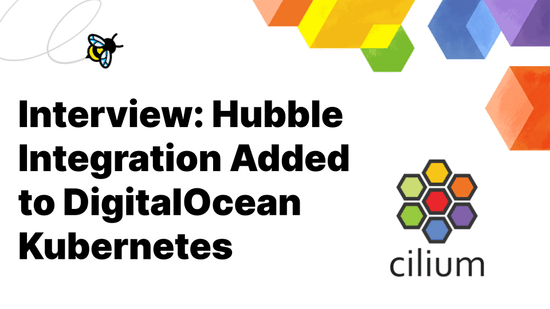Interview: Hubble Integration Added to DigitalOcean Kubernetes
Exclusive Interview with DigitalOcean on Integrating Hubble into their Kubernetes Offering
Exclusive Interview with DigitalOcean on Integrating Hubble into their Kubernetes Offering
Cilium 1.15 has arrived with Gateway API 1.0 Support, Cluster Mesh Scale Increase, Security Optimizations, and more
There is an amazing lineup of Cilium activities at KubeCon + CloudNativeCon
Today marks an exciting day for the Cilium community and all Cilium contributors, Google just announced that Cilium has been selected and made available as the new datapath for GKE and Anthos.In this post, we will take a look behind the scenes that lead up to this.
Multitenancy is a common pattern in Kubernetes. Many organizations deploy Kubernetes-as-a-Service, where one cluster houses many tenants and workloads. This pattern might sound familiar, as cloud computing services like AWS, Azure, and GCP have enabled multiple customers (tenants) to run their business-critical workloads in a single cluster for years.
Recently a vulnerability was discovered by Etienne Champetier that impacted several Kubernetes CNIs. The vulnerability worked by having an attacker pod send rogue IPv6 “Router Advertisement” packets to the host worker node, causing the node to route its IPv6 traffic through the attackers pod (commonly known as “Man-In-The-Middle”). Fortunately for users of Cilium, this vulnerability didn’t impact their environments because of several built-in and on-by-default security features provided by Cilium.In this blog post, we’ll discuss how on-by-default Cilium features automatically protect against these common types of network attacks.
We are excited to announce the Cilium 1.8 release. A total of 2162 commits have been contributed by a community of 182 developers, many of whom made their first contributions this cycle. Cilium 1.8 brings with it a trove of exciting new features
现代数据中心的应用系统已经逐渐转向基于微服务架构的开发体系,一个微服务架构的应用系统是由多个小的独立的服务组成,它们之间通过轻量通信协议如 HTTP、gRPC、Kafka 等进行通信。微服务架构下的服务天然具有动态变化的特点,结合容器化部署,时常会引起大规模的容器实例启动或重启。要确保这种向高度动态化的微服务应用之间的安全可达,既是挑战,也是机遇。
In this guide, we will walk through the steps required to build a multi-node Kubernetes cluster on your local workstation or laptop using K3s and Cilium. Then we'll show how you can use Hubble to inspect traffic in the cluster and visualize data exposed by the superpowers of eBPF and Cilium. We will also show you how to restrict the flow of traffic between applications. Finally, we will see how Cilium and Hubble can provide detailed information to help you solve problems related to compliance and regulations.
We are excited to announce the Cilium 1.7 release. A total of 1551 commits have been contributed by a community of 141 developers, many of whom made their first contributions this cycle. Cilium 1.7 brings with it a trove of exciting new features
This post provides the background on how [Trip.com] uses Cilium and what lead the team to standardize on Cilium as their networking and network security platform for the years to come. It is a summary with some commentary of the original trip.com blog post by ArthurChiao from Trip.com/Ctrip which provides extensive details into the decision-making process and experiences while running Cilium in production.
DNS is a common cause for outages and incidents in Kubernetes clusters. For real-world stories, swing by Kubernetes Failure Stories. How do you debug and troubleshoot DNS issues? How do you know a problem is related to DNS? This guide provides a step by step tutorial on how to systematically troubleshoot DNS issues in Kubernetes clusters. We will be using [Hubble] to identify and inspect DNS issues as well as set up monitoring so we can locate DNS issues early on to react even before incidents occur.
For live conversation and quick questions, join the Cilium Slack workspace. Don’t forget to say hi!
Join slack workspace









